 Mother's Day is traditionally celebrated on the second Sunday in May. That is the day Americans of all ages reserve as a day to acknowledge and thank their mothers. Over 80% of Americans celebrate Mother's Day on some level. Be it a simple phone call, a dinner out, or a gift ï¾– any gesture, large or small, is appreciated by mothers all over the country.
Mother's Day is traditionally celebrated on the second Sunday in May. That is the day Americans of all ages reserve as a day to acknowledge and thank their mothers. Over 80% of Americans celebrate Mother's Day on some level. Be it a simple phone call, a dinner out, or a gift ï¾– any gesture, large or small, is appreciated by mothers all over the country.
 The early Christians held a holiday in honor of the Virgin Mary, the mother of Jesus. It was observed on the 4th Sunday of Lent and was called "Mothering Sunday."" On this day, people would return home to their Mother Church ï¾– the main church in their village - for a special sermon. In the sixteenth century in England, children would bring flowers to their mothers after the special sermon in church. Eventually, England chose to expand ""Mothering Sunday"" to include all mothers. During that time, all servants that worked for the rich were presented with the opportunity to return home to visit their mothers. This practice was eventually stopped with the advent of the Industrial Revolution, which changed the working and living arrangements for many workers. However, one Sunday was still retained as a day for Mothers, finally becoming a national holiday in England in the twentieth century."
The early Christians held a holiday in honor of the Virgin Mary, the mother of Jesus. It was observed on the 4th Sunday of Lent and was called "Mothering Sunday."" On this day, people would return home to their Mother Church ï¾– the main church in their village - for a special sermon. In the sixteenth century in England, children would bring flowers to their mothers after the special sermon in church. Eventually, England chose to expand ""Mothering Sunday"" to include all mothers. During that time, all servants that worked for the rich were presented with the opportunity to return home to visit their mothers. This practice was eventually stopped with the advent of the Industrial Revolution, which changed the working and living arrangements for many workers. However, one Sunday was still retained as a day for Mothers, finally becoming a national holiday in England in the twentieth century."
 The concept of setting aside a day to pay tribute to mothers in America was born during the Civil War. Julia Ward Howe is best known for composing the famous Civil War song "Battle Hymn of the Republic"". She fought tirelessly to end the ""sons killing the sons of other mothers"" and in 1870 issued the ""Mother's Day Proclamation"", in which she called on all mothers to unite together to help end the war and promote world peace. By 1872, she succeeded in raising awareness for this holiday by initiating a ""Mothers' Peace Day"" observance in Boston on the second Sunday in June. Although this new Mother's Day holiday was celebrated in 18 American cities, the practice eventually died out, since that day was not yet recognized as the official American holiday."
The concept of setting aside a day to pay tribute to mothers in America was born during the Civil War. Julia Ward Howe is best known for composing the famous Civil War song "Battle Hymn of the Republic"". She fought tirelessly to end the ""sons killing the sons of other mothers"" and in 1870 issued the ""Mother's Day Proclamation"", in which she called on all mothers to unite together to help end the war and promote world peace. By 1872, she succeeded in raising awareness for this holiday by initiating a ""Mothers' Peace Day"" observance in Boston on the second Sunday in June. Although this new Mother's Day holiday was celebrated in 18 American cities, the practice eventually died out, since that day was not yet recognized as the official American holiday."
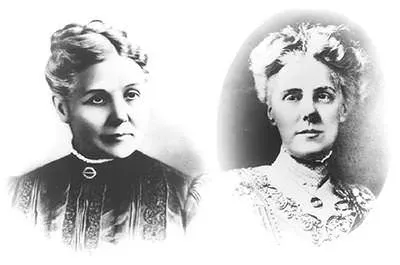 In the early 1900's, the crusade to bring Mother's Day into the spotlight was taken over by Anna Jarvis. Her mother, Ann Reeves Jarvis, was a founder of Mother's Day work clubs during the Civil War. She was an active member of her church and taught Sunday School in West Virginia, where the family lived. Little Anna remembered one of her mother's sermons, which urged her students to remember and honor their mothers. Mrs. Jarvis wished, "I hope and pray that someone, sometime, will found a memorial mother's day commemorating her for the matchless service she renders to humanity in every field of life. She is entitled to it""."
In the early 1900's, the crusade to bring Mother's Day into the spotlight was taken over by Anna Jarvis. Her mother, Ann Reeves Jarvis, was a founder of Mother's Day work clubs during the Civil War. She was an active member of her church and taught Sunday School in West Virginia, where the family lived. Little Anna remembered one of her mother's sermons, which urged her students to remember and honor their mothers. Mrs. Jarvis wished, "I hope and pray that someone, sometime, will found a memorial mother's day commemorating her for the matchless service she renders to humanity in every field of life. She is entitled to it""."
 When her mother died in 1905, Anna looked for meaningful ways to remember and honor her mother's memory. She knew how much her mother wanted an establishment of a national Mother's Day holiday and decided right then and there to dedicate her time and effort to making her late mother's dream into reality. Anna Jarvis began writing to congressmen, politicians and business executives all over the country urging them to recognize Mother's Day. In 1910, the governor of West Virginia assigned the second Sunday in May as Mother's Day. In 1914 Congress passed a bill and President Woodrow Wilson signed it, further cementing Mother's Day as an official American holiday.
When her mother died in 1905, Anna looked for meaningful ways to remember and honor her mother's memory. She knew how much her mother wanted an establishment of a national Mother's Day holiday and decided right then and there to dedicate her time and effort to making her late mother's dream into reality. Anna Jarvis began writing to congressmen, politicians and business executives all over the country urging them to recognize Mother's Day. In 1910, the governor of West Virginia assigned the second Sunday in May as Mother's Day. In 1914 Congress passed a bill and President Woodrow Wilson signed it, further cementing Mother's Day as an official American holiday.
 Since then, many Mother's Day traditions arose, such as going to church, presenting mothers with flowers and gifts, with red carnations being the official Mother's Day flower. Other traditions include taking moms out to eat or serving them breakfast in bed. Many restaurants report Mother's Day as being their busiest day of the year. Young children are encouraged by preschools all over the country to make meaningful Mother's Day gifts. Some adults bring flowers, such as white carnations, to their deceased mothers' gravesites.
Since then, many Mother's Day traditions arose, such as going to church, presenting mothers with flowers and gifts, with red carnations being the official Mother's Day flower. Other traditions include taking moms out to eat or serving them breakfast in bed. Many restaurants report Mother's Day as being their busiest day of the year. Young children are encouraged by preschools all over the country to make meaningful Mother's Day gifts. Some adults bring flowers, such as white carnations, to their deceased mothers' gravesites.
 Mother's Day is the third busiest holiday in the US for sending cards. More than 50% of American households send their moms greeting cards. Buying custom-made Mother's rings and other jewelry is another popular tradition. The top 3 gift categories for Mother's Day are flowers, gift cards, and jewelry, in addition to greeting cards and dining at restaurants. In 2015, most Americans have spent over $170 on a Mother's Day gift, with the online shoppers spending close to $250. Strangely enough, it is the commercialization of this holiday that allowed it to survive, while many other holidays, such as Children's Day and Temperance Sunday, have died out.
Mother's Day is the third busiest holiday in the US for sending cards. More than 50% of American households send their moms greeting cards. Buying custom-made Mother's rings and other jewelry is another popular tradition. The top 3 gift categories for Mother's Day are flowers, gift cards, and jewelry, in addition to greeting cards and dining at restaurants. In 2015, most Americans have spent over $170 on a Mother's Day gift, with the online shoppers spending close to $250. Strangely enough, it is the commercialization of this holiday that allowed it to survive, while many other holidays, such as Children's Day and Temperance Sunday, have died out.
 Close to 50 countries around the world celebrate Mother's Day. United States, Canada, and Australia celebrate it on the second Sunday in May, and the United Kingdom observes it three weeks before Easter Sunday. Each country has its own traditions and ways of remembering mothers. Read on to find out about the many ways of celebrating this important holiday.
Close to 50 countries around the world celebrate Mother's Day. United States, Canada, and Australia celebrate it on the second Sunday in May, and the United Kingdom observes it three weeks before Easter Sunday. Each country has its own traditions and ways of remembering mothers. Read on to find out about the many ways of celebrating this important holiday.
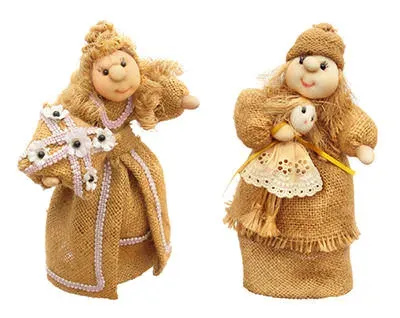 The holiday is celebrated on the first Sunday in October, possibly to retain its springtime feel as Argentina is located below the equator, and has reversed seasons. Mothers customarily enjoy flowers, cards, chocolates, jewelry and special dinners. Husbands may make their wives a home cooked meal or take them out for a special Mother's Day party. Children may make handmade crafts at school for their mothers and present them with cards.
The holiday is celebrated on the first Sunday in October, possibly to retain its springtime feel as Argentina is located below the equator, and has reversed seasons. Mothers customarily enjoy flowers, cards, chocolates, jewelry and special dinners. Husbands may make their wives a home cooked meal or take them out for a special Mother's Day party. Children may make handmade crafts at school for their mothers and present them with cards.
 Australians celebrate Mother's Day at the same time as the Americans, on the second Sunday in May. Australian Mother's Day originated in 1924, when Janet Heyden, a lady from Leichhardt, Sydney decided to acknowledge the impoverished mothers from Sydney's suburbs of Newington State Home. She sought to brighten their day by gifting them sweets, perfumes, and various hair accessories. She then decided to broaden the idea of honoring mothers to all mums in Australia and urged the local newspapers to help propagate this notion. The idea caught on fast and Mother's Day became a day of celebration in Australia, though not a federal holiday.
Australians honor not only their mothers but all the women they take on a motherly role, such as grandmothers, stepmothers, etc. Serving breakfast in bed is common, as well as gifting cards, flowers, chocolates, and gifts. There is a tradition of wearing carnations on Mother's Day: a colored carnation if the mother is alive, and a white carnation to remember a mother that is deceased. Another popular custom is to exchange perfume and tea.
Australians celebrate Mother's Day at the same time as the Americans, on the second Sunday in May. Australian Mother's Day originated in 1924, when Janet Heyden, a lady from Leichhardt, Sydney decided to acknowledge the impoverished mothers from Sydney's suburbs of Newington State Home. She sought to brighten their day by gifting them sweets, perfumes, and various hair accessories. She then decided to broaden the idea of honoring mothers to all mums in Australia and urged the local newspapers to help propagate this notion. The idea caught on fast and Mother's Day became a day of celebration in Australia, though not a federal holiday.
Australians honor not only their mothers but all the women they take on a motherly role, such as grandmothers, stepmothers, etc. Serving breakfast in bed is common, as well as gifting cards, flowers, chocolates, and gifts. There is a tradition of wearing carnations on Mother's Day: a colored carnation if the mother is alive, and a white carnation to remember a mother that is deceased. Another popular custom is to exchange perfume and tea.
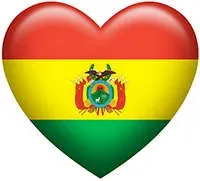 Mother's Day in Bolivia is celebrated on the second Sunday in May, just like in the U.S. However, the Bolivians send gifts to all their friends and family members who are mothers themselves, not just their own mothers. This gesture promotes a national celebration of motherhood.
Mother's Day in Bolivia is celebrated on the second Sunday in May, just like in the U.S. However, the Bolivians send gifts to all their friends and family members who are mothers themselves, not just their own mothers. This gesture promotes a national celebration of motherhood.
 Brazil pays tribute to mothers on the second Sunday in May, just like in the U.S. Brazilians spend a lot of money on their Dia das M�es gifts, as it is the second busiest holiday after Christmas. Children�s performances, special church sermons and multi-generational fiestas complete with songs and dancing serve as the cornerstone in this important holiday. Dia das Maes is such a big deal in Brazil that even prisoners are released from jail so they can visit their mothers.
Brazil pays tribute to mothers on the second Sunday in May, just like in the U.S. Brazilians spend a lot of money on their Dia das M�es gifts, as it is the second busiest holiday after Christmas. Children�s performances, special church sermons and multi-generational fiestas complete with songs and dancing serve as the cornerstone in this important holiday. Dia das Maes is such a big deal in Brazil that even prisoners are released from jail so they can visit their mothers.
 In Canada, Mother's Day is celebrated on the second Sunday in May, just like in the U.S. In fact, Canada was one of the first countries to officially make Mother's Day into a public holiday in 1909, 5 years before it was declared a national holiday in the U.S.! Mother's Day is the third busiest holiday in Canada after Christmas and Valentine's Day. Canadians thank their mothers and all other women who acted as mothers to them, such as stepmothers and grandmothers. Flowers, especially carnations, are a popular choice for a gift. Carnation being the symbol of mother's day, it is sometimes worn as a brooch on Mother's Day. Children make cards and other handmade gifts for moms in school and children that are away, make a point of calling their mom. It is no wonder that phone companies report the highest call volume on Mother's Day. Cards, jewelry, chocolates, gift certificates, clothes, and accessories are all popular choices of gifts for Mother's Day. Children customarily take over the household chores to give mom a day off and many families take moms out to fine restaurants.
In Canada, Mother's Day is celebrated on the second Sunday in May, just like in the U.S. In fact, Canada was one of the first countries to officially make Mother's Day into a public holiday in 1909, 5 years before it was declared a national holiday in the U.S.! Mother's Day is the third busiest holiday in Canada after Christmas and Valentine's Day. Canadians thank their mothers and all other women who acted as mothers to them, such as stepmothers and grandmothers. Flowers, especially carnations, are a popular choice for a gift. Carnation being the symbol of mother's day, it is sometimes worn as a brooch on Mother's Day. Children make cards and other handmade gifts for moms in school and children that are away, make a point of calling their mom. It is no wonder that phone companies report the highest call volume on Mother's Day. Cards, jewelry, chocolates, gift certificates, clothes, and accessories are all popular choices of gifts for Mother's Day. Children customarily take over the household chores to give mom a day off and many families take moms out to fine restaurants.
 Mother's Day in China in celebrated on the second Sunday in May, just like in the U.S., although it's not considered an official Chinese holiday. The day is outlined with gifts and festivities, cards and phone calls to mom. Gifting flowers, specifically carnations, to mothers became a popular way to honor and thank mothers just like in the U.S. However; some Chinese officials are hoping to change carnations to lilies, as it is more characteristic of Chinese culture. When children leave home, their mothers customarily plant lilies in their home gardens.
Mother's Day in China in celebrated on the second Sunday in May, just like in the U.S., although it's not considered an official Chinese holiday. The day is outlined with gifts and festivities, cards and phone calls to mom. Gifting flowers, specifically carnations, to mothers became a popular way to honor and thank mothers just like in the U.S. However; some Chinese officials are hoping to change carnations to lilies, as it is more characteristic of Chinese culture. When children leave home, their mothers customarily plant lilies in their home gardens.
 Egypt and many other Arab countries celebrate Mother's Day on March 21st. It was first introduced by journalist Mustafa Amin in 1956, and it remains an unofficial national holiday. It is observed by many by gift-giving and a day of festivities.
Egypt and many other Arab countries celebrate Mother's Day on March 21st. It was first introduced by journalist Mustafa Amin in 1956, and it remains an unofficial national holiday. It is observed by many by gift-giving and a day of festivities.
 Mother's Day in Ethiopia, otherwise known as "Antrosht festival"" is a three-day celebration held in the fall, at the end of the rainy season. When the rain ceases, the adults and young families come back to their motherland to honor all mothers. The daughters traditionally bring vegetables, spices, cheese and butter, while the sons bring in the meat. The women cook the festive meal, and the entire family partakes in the joyous celebration, followed by song and dance."
Mother's Day in Ethiopia, otherwise known as "Antrosht festival"" is a three-day celebration held in the fall, at the end of the rainy season. When the rain ceases, the adults and young families come back to their motherland to honor all mothers. The daughters traditionally bring vegetables, spices, cheese and butter, while the sons bring in the meat. The women cook the festive meal, and the entire family partakes in the joyous celebration, followed by song and dance."
 France's Fete Des Meres (Mother's Day) is celebrated on the last Sunday in May. The roots of modern day Mother's Day took place in 1806 when Emperor Napoleon declared a day to celebrate mothers of large families. In 1920, the holiday was temporarily celebrated on December 19th, when France was on a mission to re-populate after horrific losses from World War 1. Special medals, known as Medaille de la Famille, were given to mothers with large families, as well as to mothers who lost their husbands and had to raise their kids alone. A bronze medal was presented to mothers of 4-5 children; a silver medal was awarded to mothers of 6-7 children, and a gold medal was reserved for mothers of 8 or more children. Today, Mother's Day is celebrated on May 25th, a tradition since 1945, and mothers customarily receive cards, chocolates, flowers, jewelry, and perfume. Handwritten notes and handmade gifts are also popular, as well as enjoying a special meal with friends or family.
France's Fete Des Meres (Mother's Day) is celebrated on the last Sunday in May. The roots of modern day Mother's Day took place in 1806 when Emperor Napoleon declared a day to celebrate mothers of large families. In 1920, the holiday was temporarily celebrated on December 19th, when France was on a mission to re-populate after horrific losses from World War 1. Special medals, known as Medaille de la Famille, were given to mothers with large families, as well as to mothers who lost their husbands and had to raise their kids alone. A bronze medal was presented to mothers of 4-5 children; a silver medal was awarded to mothers of 6-7 children, and a gold medal was reserved for mothers of 8 or more children. Today, Mother's Day is celebrated on May 25th, a tradition since 1945, and mothers customarily receive cards, chocolates, flowers, jewelry, and perfume. Handwritten notes and handmade gifts are also popular, as well as enjoying a special meal with friends or family.
 Mother's Day is officially observed on May 10th, or second Sunday in May in the more Westernized Indian households. Indian children throughout the country participate in special Mother's Day celebrations, which are meticulously organized by their teachers in honor of their mothers. Each child tells something positive about his or her mother by way of reciting a poem, reading an essay, performing a dance, or singing a special song. The mothers bring something tasty to eat in the classroom and engage in a show and tell with the students, or teach them a new way of doing something, such as a new song or a new dance. At the end of the day, the children present a handmade trinket or a personalized card for their mother to take home. After school, kids spend the day with their mothers going to parks, malls, or playgrounds. Some children prepare breakfast in bed for their mothers and relieve them of all housework responsibility for the day. Gifts such as jewelry, clothes or accessories are also popular.
The more traditional Indian families celebrate Mother's Day as a tribute to the mother goddess Durga, or the Divine Mother. This ten-day festival held in October commemorates the victory of righteousness over wickedness and is known as Durga Puja. It is marked by gift-giving to friends and family, parties and feasts.
Mother's Day is officially observed on May 10th, or second Sunday in May in the more Westernized Indian households. Indian children throughout the country participate in special Mother's Day celebrations, which are meticulously organized by their teachers in honor of their mothers. Each child tells something positive about his or her mother by way of reciting a poem, reading an essay, performing a dance, or singing a special song. The mothers bring something tasty to eat in the classroom and engage in a show and tell with the students, or teach them a new way of doing something, such as a new song or a new dance. At the end of the day, the children present a handmade trinket or a personalized card for their mother to take home. After school, kids spend the day with their mothers going to parks, malls, or playgrounds. Some children prepare breakfast in bed for their mothers and relieve them of all housework responsibility for the day. Gifts such as jewelry, clothes or accessories are also popular.
The more traditional Indian families celebrate Mother's Day as a tribute to the mother goddess Durga, or the Divine Mother. This ten-day festival held in October commemorates the victory of righteousness over wickedness and is known as Durga Puja. It is marked by gift-giving to friends and family, parties and feasts.
 "Festa Della Mamma"" is officially celebrated in Italy since 1957, on the second Sunday in May. Italians celebrate Mother's Day by giving their mother a day or rest from household chores and taking her out to dinner later. The meal is not complete without a heart-shaped cake. It is the busiest time of the year for Italian restaurants. Husbands usually bring home flowers for their wives (if they are mothers themselves), and children bring home homemade cards or crafts. And if a son or a daughter can't see their mother on Festa Della Mamma, they are guaranteed to at least call her on this significant day."
"Festa Della Mamma"" is officially celebrated in Italy since 1957, on the second Sunday in May. Italians celebrate Mother's Day by giving their mother a day or rest from household chores and taking her out to dinner later. The meal is not complete without a heart-shaped cake. It is the busiest time of the year for Italian restaurants. Husbands usually bring home flowers for their wives (if they are mothers themselves), and children bring home homemade cards or crafts. And if a son or a daughter can't see their mother on Festa Della Mamma, they are guaranteed to at least call her on this significant day."
 Mother's Day in Japan, or "Haha No Hi"", is celebrated on the second Sunday in May since 1913. Beginning in the 1950's, Japanese children would participate in an art contest, held every four years, in honor of Mother's Day. The children were encouraged to submit drawings of their mothers and the winning entries were toured across Japan in a festive display. Sending cards is not as popular in Japan as it is in the Unites States, but rather sending flowers, particularly red carnations, is the preferred gift. Children customarily help with chores around the house and help prepare the family's meal. Traditional Japanese cuisine for Mother's Day may include Tamagoyaki, a rectangular omelet and Chawanmushi, a custard egg eaten with chicken or shrimp. Many families choose to have a festive meal in a restaurant, resulting in Mother's Day being the busiest time of the year for restaurants."
Mother's Day in Japan, or "Haha No Hi"", is celebrated on the second Sunday in May since 1913. Beginning in the 1950's, Japanese children would participate in an art contest, held every four years, in honor of Mother's Day. The children were encouraged to submit drawings of their mothers and the winning entries were toured across Japan in a festive display. Sending cards is not as popular in Japan as it is in the Unites States, but rather sending flowers, particularly red carnations, is the preferred gift. Children customarily help with chores around the house and help prepare the family's meal. Traditional Japanese cuisine for Mother's Day may include Tamagoyaki, a rectangular omelet and Chawanmushi, a custard egg eaten with chicken or shrimp. Many families choose to have a festive meal in a restaurant, resulting in Mother's Day being the busiest time of the year for restaurants."
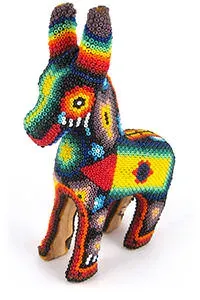 El Dia de la Madre, or Mother's Day, is celebrated on May 10th. Handmade gifts by the children or store bought items such as jewelry, flowers, and cards by older children are a popular way to honor mothers in Mexico. Mother's Day can sometimes function as a family reunion. There's a custom where grown up children come to the family home the night before and spend Mother's Day together. Many schools organize special Mother's Day assemblies where the children perform songs and dances to entertain their mothers. Many churches hold special sermons in honor of Mother's Day. At the end of the sermon, mothers are given "tamales"" and ""atole"" ï¾– traditional breakfast foods, while the orchestra plays ""Las Mananitas""."
El Dia de la Madre, or Mother's Day, is celebrated on May 10th. Handmade gifts by the children or store bought items such as jewelry, flowers, and cards by older children are a popular way to honor mothers in Mexico. Mother's Day can sometimes function as a family reunion. There's a custom where grown up children come to the family home the night before and spend Mother's Day together. Many schools organize special Mother's Day assemblies where the children perform songs and dances to entertain their mothers. Many churches hold special sermons in honor of Mother's Day. At the end of the sermon, mothers are given "tamales"" and ""atole"" ï¾– traditional breakfast foods, while the orchestra plays ""Las Mananitas""."
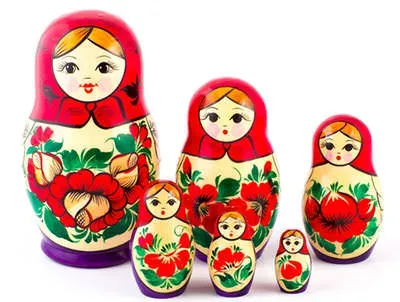 Mother's Day in Russia is celebrated on the last Sunday in November. However, this holiday is rather new, as it was introduced to Russia only in 1998, after the fall of the Soviet Union. Most Russians continue to give cards, flowers, jewelry, gifts, and chocolates to their mothers and all other women on March 8th, which is the International Women's Day celebrated in many countries.
Mother's Day in Russia is celebrated on the last Sunday in November. However, this holiday is rather new, as it was introduced to Russia only in 1998, after the fall of the Soviet Union. Most Russians continue to give cards, flowers, jewelry, gifts, and chocolates to their mothers and all other women on March 8th, which is the International Women's Day celebrated in many countries.
 The celebration of Mother's Day is unique in Serbia. Called "Materice"", it is part of a series of family holidays, such as Father's Day and Children's Day. All three are held each consecutive Sunday in December. On Children's Day, the kids get tied up with festive string, ribbon, or rope until they promise to behave. Then they are unbound. The following Sunday is Mother's Day, when the children sneak into their mother's bedroom early in the morning and tie up their mothers with festive rope until they agree to hand out candy and other sweets and treats to their children. The holiday culminates with Father's Day. Fathers get tied up too, until they promise to deliver the Christmas gifts. The holiday ends with a grand, festive meal."
The celebration of Mother's Day is unique in Serbia. Called "Materice"", it is part of a series of family holidays, such as Father's Day and Children's Day. All three are held each consecutive Sunday in December. On Children's Day, the kids get tied up with festive string, ribbon, or rope until they promise to behave. Then they are unbound. The following Sunday is Mother's Day, when the children sneak into their mother's bedroom early in the morning and tie up their mothers with festive rope until they agree to hand out candy and other sweets and treats to their children. The holiday culminates with Father's Day. Fathers get tied up too, until they promise to deliver the Christmas gifts. The holiday ends with a grand, festive meal."
 Mother's Day, or Mors Dag, in Sweden is celebrated on the last Sunday in May. The day as a holiday was introduced in 1919 and became famous in the 1930's. The Swedish flag is traditionally flown on that day, mothers are served breakfast in bed and are given a day of rest from household chores. Gifts are obligatory, as well as phone calls, and asking forgiveness for any wrongdoings. The Swedish Red Cross sells plastic flowers a few weeks before Mors Dag and then donates the money to charitable organizations helping poor mothers.
Mother's Day, or Mors Dag, in Sweden is celebrated on the last Sunday in May. The day as a holiday was introduced in 1919 and became famous in the 1930's. The Swedish flag is traditionally flown on that day, mothers are served breakfast in bed and are given a day of rest from household chores. Gifts are obligatory, as well as phone calls, and asking forgiveness for any wrongdoings. The Swedish Red Cross sells plastic flowers a few weeks before Mors Dag and then donates the money to charitable organizations helping poor mothers.
 Mother's Day in Taiwan falls out on the second Sunday in May and coincides with Buddha's birthday. This pairing makes the holiday so much more special and gives it a bit of a religious flavor as well.
Mother's Day in Taiwan falls out on the second Sunday in May and coincides with Buddha's birthday. This pairing makes the holiday so much more special and gives it a bit of a religious flavor as well.
 Mother's Day, or "Mothering Sunday"" is held on the fourth Sunday during Lent. In the 16th century, this holiday was meant for workers and other domestic servants to be given a day off so they can spend it in their ""mother church"" with their mothers. Today, it remains as a day to honor all mothers, including stepmothers, mothers-in-law, and grandmothers. Flowers, such as roses, carnations and violets are the most popular Mother's Day gifts among the British. Baking ""Mothering Cake"", or Simnel Cake, which is a delicious almond cake topped with marzipan or fruit, is another popular trend in the UK. Other traditions include gifting chocolates, jewelry, and expensive clothes, as well as inviting mothers out to eat. Children often make handmade crafts and cards for their mothers in school."
Mother's Day, or "Mothering Sunday"" is held on the fourth Sunday during Lent. In the 16th century, this holiday was meant for workers and other domestic servants to be given a day off so they can spend it in their ""mother church"" with their mothers. Today, it remains as a day to honor all mothers, including stepmothers, mothers-in-law, and grandmothers. Flowers, such as roses, carnations and violets are the most popular Mother's Day gifts among the British. Baking ""Mothering Cake"", or Simnel Cake, which is a delicious almond cake topped with marzipan or fruit, is another popular trend in the UK. Other traditions include gifting chocolates, jewelry, and expensive clothes, as well as inviting mothers out to eat. Children often make handmade crafts and cards for their mothers in school."